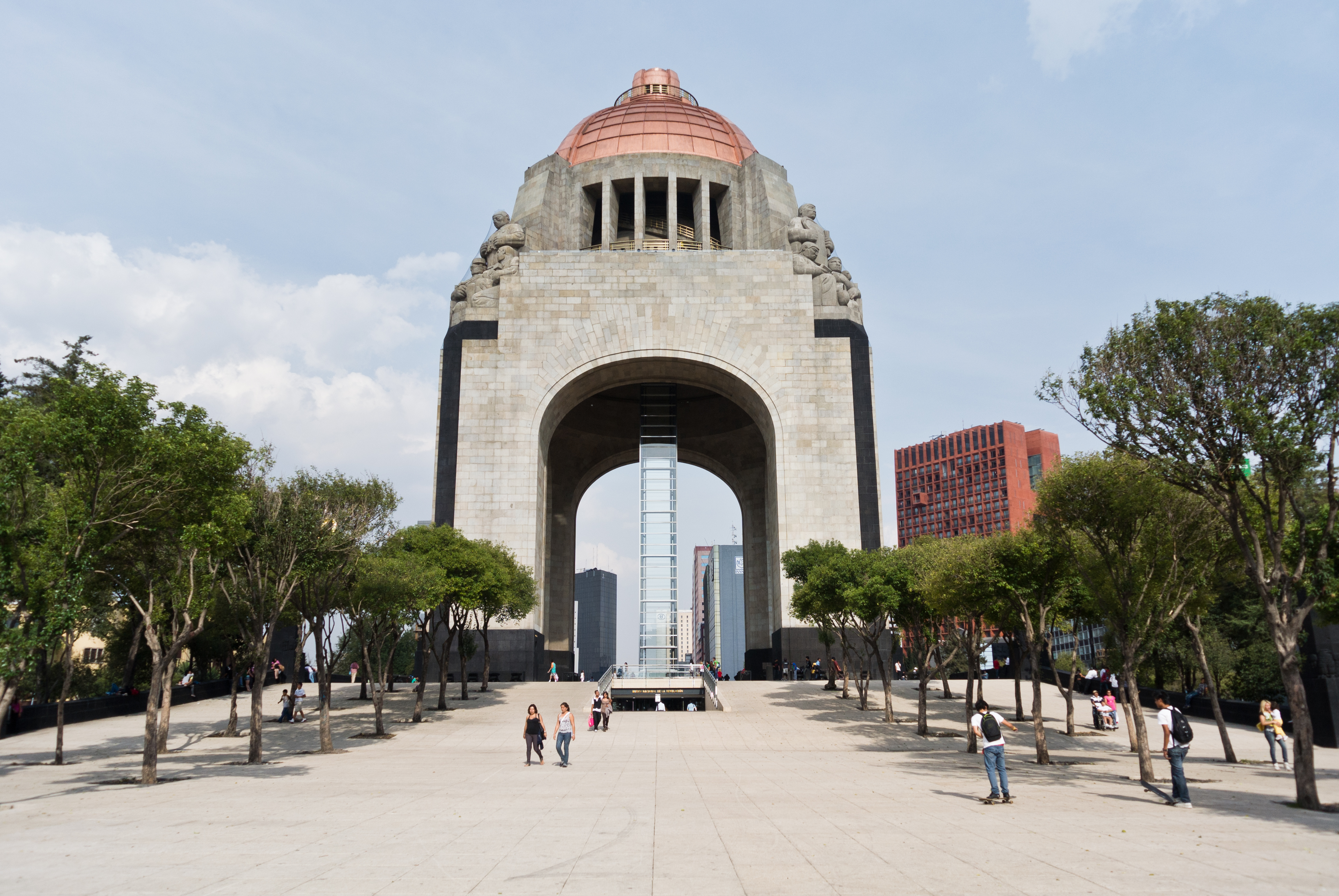Carlos Obregón Santacilia on:
[Wikipedia]
[Google]
[Amazon]
Carlos Obregón Santacilia (1896–1961) was a  Obregón saw the new architecture following the violent and destructive Mexican Revolution as the government's impulse to be constructive. Among other works, Obregón Santacilia redesigned the building housing the Secretariat of Foreign Relations, at the request of Alberto J. Pani. The building went from a
Obregón saw the new architecture following the violent and destructive Mexican Revolution as the government's impulse to be constructive. Among other works, Obregón Santacilia redesigned the building housing the Secretariat of Foreign Relations, at the request of Alberto J. Pani. The building went from a
Mexican
Mexican may refer to:
Mexico and its culture
*Being related to, from, or connected to the country of Mexico, in North America
** People
*** Mexicans, inhabitants of the country Mexico and their descendants
*** Mexica, ancient indigenous people ...
art déco
Art Deco, short for the French ''Arts Décoratifs'', and sometimes just called Deco, is a style of visual arts, architecture, and product design, that first appeared in France in the 1910s (just before World War I), and flourished in the Unite ...
architect
An architect is a person who plans, designs and oversees the construction of buildings. To practice architecture means to provide services in connection with the design of buildings and the space within the site surrounding the buildings that h ...
. He trained at the Academy of San Carlos
The Academy of San Carlos ( es, Academia de San Carlos) is located at 22 Academia Street in just northeast of the main plaza of Mexico City. It was the first major art academy and the first art museum in the Americas. It was founded in 1781 as th ...
during the Mexican Revolution
The Mexican Revolution ( es, Revolución Mexicana) was an extended sequence of armed regional conflicts in Mexico from approximately 1910 to 1920. It has been called "the defining event of modern Mexican history". It resulted in the destruction ...
. He claimed a distinguished Mexican heritage, as great grandson of Benito Juárez
Benito Pablo Juárez García (; 21 March 1806 – 18 July 1872) was a Liberalism in Mexico, Mexican liberal politician and lawyer who served as the 26th president of Mexico from 1858 until his death in office in 1872. As a Zapotec peoples, Zapo ...
and grand nephew of Alvaro Obregón.
 Obregón saw the new architecture following the violent and destructive Mexican Revolution as the government's impulse to be constructive. Among other works, Obregón Santacilia redesigned the building housing the Secretariat of Foreign Relations, at the request of Alberto J. Pani. The building went from a
Obregón saw the new architecture following the violent and destructive Mexican Revolution as the government's impulse to be constructive. Among other works, Obregón Santacilia redesigned the building housing the Secretariat of Foreign Relations, at the request of Alberto J. Pani. The building went from a Louis XIV style
The Louis XIV style or ''Louis Quatorze'' ( , ), also called French classicism, was the style of architecture and decorative arts intended to glorify King Louis XIV and his reign. It featured majesty, harmony and regularity. It became the officia ...
structure to a neo-Colonial work, opened in 1924. Minister of Public Education in the Obregón government, José Vasconcelos
José Vasconcelos Calderón (28 February 1882 – 30 June 1959), called the "cultural " of the Mexican Revolution, was an important Mexican writer, philosopher, and politician. He is one of the most influential and controversial personalities ...
asked Obregón Santacilia to design a large primary school in Mexico City, to be built in "new nationalist perspective." He also designed the new building for the Secretariat of Health and Welfare (1926), later decorated with murals by Diego Rivera
Diego María de la Concepción Juan Nepomuceno Estanislao de la Rivera y Barrientos Acosta y Rodríguez, known as Diego Rivera (; December 8, 1886 – November 24, 1957), was a prominent Mexican painter. His large frescoes helped establish the ...
.Olsen, ''Artifacts of Revolution'', pp. 16-17. He reworked the abandoned legislative palace of the Díaz era and transformed it to the Monumento a la Revolución
The Monument to the Revolution ( es, Monumento a la Revolución, links=no) is a landmark and monument commemorating the Mexican Revolution. It is located in the Plaza de la República, near to the heart of the major thoroughfares Paseo de la Re ...
, located in Mexico City
Mexico City ( es, link=no, Ciudad de México, ; abbr.: CDMX; Nahuatl: ''Altepetl Mexico'') is the capital and largest city of Mexico, and the most populous city in North America. One of the world's alpha cities, it is located in the Valley o ...
.
Publications
*''El Maquinismo, la Vida y la Arquitectura/Machines, Life, and Architecture''. Cleveland: J.H. Jansen 1939. *''Cincuenta (50) Años de Arquitectura Mexicana (1900-1950)''. Mexico City: Editorial Patria 1952. *''El Monumento a la Revolución, Simbolismo e Historia''. Mexico: Secretaria de Educación Pública, Departamento de Divulgación 1960.Further reading
*Garay Arellano, Graciela de. ''La Obra de Carlos Obregón Santacilia, Arquitecto''. Mexico City: Secretaría de Educación Pública, INBA 1982. *Olsen, Patrice Elizabeth, ''Artifacts of Revolution: Architecture, Society, and Politics in Mexico City, 1920-1940''. Lanham MD: Rowman & Littlefield 2008.See also
* Architecture of MexicoReferences
Art Deco architects Modernist architects from Mexico 1896 births 1961 deaths Art Deco architecture in Mexico 20th-century Mexican architects {{Mexico-architect-stub